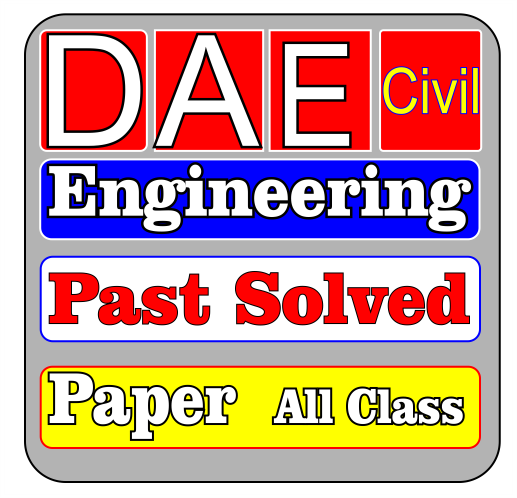Below is Live Online Preview
Project Management:
The Process Context Problems, needs, and opportunities continually arise in every organization. Problems like low operational efficiency, needs like additional office space, and opportunities like penetrating a new product market are just a few of a nearly endless number of situations that management must address in the process of operating an organization or company. These problems, needs, and opportunities give rise to the identification of solutions. Executing those solutions entails a change for the organization. Projects are generally established to carry out this change and there’s always someone responsible for the successful completion of each project. As the project manager, you are the primary change agent, and your guide for carrying out the change is the project management process. What Is a Project? Several definitions exist for “project.” We used a simple one in Chapter 1: “A temporary endeavor undertaken to achieve a particular aim.” Whichever specific definition you choose, nearly every project you manage will have many of the same characteristics. Let’s examine some of the most important ones. At the most basic level, a project is actually the response to a need, the solution to a problem. Further, it’s a solution that promises a benefit—typically a financial benefit. The fundamental purpose for most projects is to either make money or save money. That’s why projects should be financially justifiable, as we’ll see in Chapter 4. By definition, a project is temporary in nature; that means that it has a specific start and finish. A project consists of a well-defined collection of small jobs (tasks) and ordinarily culminates in the creation of an end product or products (deliverables). There will be a preferred sequence of execution for the project’s tasks (the schedule). A project is a unique, one-time undertaking; it will never again be done exactly the same way, by the same people, and within the same environment. This is a noteworthy point, as it 10 Project Management suggests that you will rarely have the benefit of a wealth of historical information when you start your project. You’ll have to launch your project with limited information or, worse yet, misinformation. There will always be some uncertainty associated with your project. This uncertainty represents risk—an ever-present threat to your ability to make definitive plans and predict outcomes with high levels of confidence. All of your projects consume resources—resources in the form of time, money, materials, and labor. One of your primary missions is to serve as the overall steward of these resources—to apply them as sparingly and as effectively as possible. So, there’s a general definition or explanation. Here are some examples of projects: introducing a new product to the marketplace, building and installing a piece of equipment, and running a political campaign. In contrast, the following activities are not projects: operating a manufacturing facility, supervising a work group, and running a retail business. These activities are ongoing. What Is Project Management? The Project Management Institute defines project management as “... the application of knowledge, skills, tools and techniques to project activities to meet project requirements” (A Guide to the Project Management Body of Knowledge, 2000 Edition, Newtown Square, PA: Project Management Institute, 2000, p. 6). Although this definition may sound pretty straightforward, you will find that the skillful application of those skills, tools, and techniques will come only after you’ve had a significant amount of education and on-the-job experience. The project management process calls for the creation of a small organizational structure (the project team), which is often a microcosm of the larger organization. Once the team has produced the desired outcome, the process then calls for the decommissioning of that small organizational structure. The Project Life Cycle: The View from 50,000 Feet Projects typically have identifiable phases and each phase has a About Projects and Project Management 11 unique set of challenges for the project manager. If we view the project process from the highest level, four basic project phases can be identified. During the first of these four phases, the Initiation Phase, the need is identified. An appropriate response to the need is determined and described. (This is actually where the project begins.) The major deliverables and the participating work groups are identified. The team begins to take shape. Issues of feasibility (can we do the project?) and justification (should we do the project?) are addressed. Next is the Planning Phase, where the project solution is further developed in as much detail as possible. Intermediate work products (interim deliverables) are identified, along with the strategy for producing them. Formulating this strategy begins with the definition of the required elements of work (tasks) and the optimum sequence for executing them (the schedule). Estimates are made regarding the amount of time and money needed to perform the work and when the work is to be done. The question of feasibility and justification surfaces again, as formal approval to proceed with the project is ordinarily sought before continuing. During the third phase, the Execution Phase, the prescribed work is performed under the watchful eye of the project manager. Progress is continuously monitored and appropriate adjustments are made and recorded as variances from the original plan. Throughout this phase, the project team remains focused on meeting the objectives developed and agreed upon at the outset of the project. During the final phase, or the Close-Out Phase, the emphasis is on verifying that the project has satisfied or will satisfy the original need. Ideally, the project culminates with a smooth transition from deliverable creation (the project) to deliverable utilization (the post-project life cycle). The project customer accepts and uses the deliverables. Throughout this phase, project resources (the members of the project team) are gradually re-deployed and the project finally shuts down. However, 12 Project Management although the project team and the project manager typically stop participating at this point, they can benefit greatly from understanding and appreciating what goes on after the project, as we will soon see. The Project Management Process: Step by Step Now that we’ve overviewed the process, let’s circle back and break it down into steps. I recommend an approach that follows the four-phase model described above, but provides for additional detail in the areas of requirements gathering, project definition, risk management, and stakeholder management. The result is the eight-step process, which we’ll use as the basis of study in this book. The eight steps are briefly summarized below: Step 1. Identify and frame the problem or opportunity. In this phase, the fundamental need is identified. The need is then quantified with respect to factors such as its size, shape, and extent. This leads to the creation of a Requirements Document, which articulates the need in as much detail as possible. The true need must be completely understood before attempting to define the best solution. A significant number of project failures can be attributed to the phenomenon of solutionjumping. In simple terms, this occurs when you try to provide an answer without understanding the question. This is a real possibility whenever the requirements are not fully defined, and impulse— rather than a rational process—is used to determine the project solution. Step 2. Identify and define the best project solution. In Step 2, early determinations should be made regarding which work groups should be involved. A team should be formed to assist in this and all subsequent process steps. This step begins by identifying all reasonable alternatives. The team may use brainstorming or similar creativity techniques to help identify alterna

Download app for Solved paper and install it
Download Free PBTE DAE Past Solved Paper Civil 312 Project Management 3rd year 2012,2013,2014,2015,2016,2017











its not working
ReplyDeleteDosent works , FAKE ,
ReplyDelete